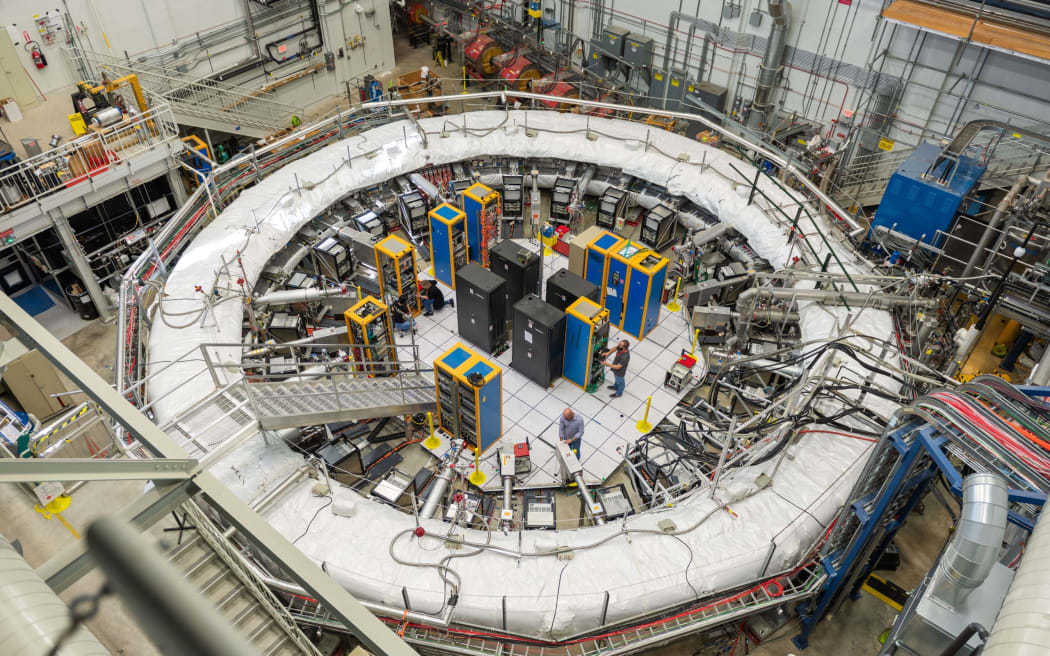Scientists in the vicinity of Chicago are edging closer to potentially uncovering a novel force of nature. Their recent findings reveal further evidence that sub-atomic particles, known as muons, are deviating from the projected behavior dictated by current theories of sub-atomic physics. This suggests the presence of an unidentified force potentially influencing these muons.

Although further data is required to validate these findings, if substantiated, it could inaugurate a transformative shift in the realm of physics. Presently, the forces that govern our daily experiences can be distilled into four fundamental categories: gravity, electromagnetism, the strong force, and the weak force. These forces dictate the interactions of all entities and particles within the Universe.
The outcomes stem from research conducted at Fermilab, a particle accelerator facility in the United States. This study builds upon previous revelations made in 2021, when the Fermilab team initially hinted at the potential existence of a fifth force of nature. In the intervening period, the researchers have amassed additional data, enhancing the precision of their measurements twofold, as explained by Dr. Brendan Casey, a senior scientist at Fermilab. This advancement has allowed them to venture into uncharted territories and refine their measurements to unprecedented precision.
Their experimentation, known as the ‘g minus two (g-2)’ experiment, involves accelerating muons through a 15-meter diameter ring, where they undergo around 1,000 revolutions at nearly the speed of light. The researchers have detected peculiar behaviors in these muons that defy explanation within the confines of the prevailing theory, the Standard Model, suggesting the potential influence of a new force of nature.
Despite the compelling evidence, the Fermilab team has not yet obtained conclusive proof. Initially, they had anticipated achieving this confirmation by now. However, uncertainties stemming from the standard model’s predictions regarding muon wobbling have increased due to advancements in theoretical physics. Consequently, the experimental physicists are faced with recalibrating their approaches. The researchers project that within two years, they will acquire the requisite data, with the theoretical uncertainties having diminished sufficiently to achieve their objective. It’s worth noting that a competing team at Europe’s Large Hadron Collider (LHC) also seeks to attain similar results.
Dr. Mitesh Patel of Imperial College London, an LHC physicist, underscores the significance of experimental results that deviate from the Standard Model’s predictions. Such results would signify a monumental breakthrough in particle physics, as the Standard Model has remained unblemished by experimental tests for over half a century.
Fermilab anticipates that their upcoming results will serve as the decisive encounter between theory and experimentation, potentially revealing new particles or forces. So, why is it such a momentous endeavor to attain experimental outcomes that don’t neatly align with the Standard Model’s predictions?
Our world comprises atoms, which in turn consist of smaller particles. These particles interact, giving rise to the four known forces of nature: electromagnetism, two nuclear forces, and gravity. The Standard Model effectively predicts their behavior and has done so with impeccable accuracy for five decades.
Muons, akin to electrons in atomic orbits, but about 200 times more massive, were subjected to controlled oscillation using potent superconducting magnets. The results revealed that these muons oscillated at a faster pace than anticipated by the standard model. Professor Graziano Venanzoni from Liverpool University, a prominent researcher in this endeavor, suggested that this divergence could be attributed to an undiscovered new force, a ‘fifth force.’
In essence, this could represent one of the most momentous scientific achievements in a century, akin to Einstein’s theory of relativity. This is due to the fact that a fifth force and any related particles lie outside the purview of the Standard Model of particle physics.
It’s well-established that phenomena beyond the Standard Model are at play, given that the existing theory fails to account for numerous astronomical observations. These anomalies encompass the ongoing acceleration of galaxies following the Big Bang, as opposed to the anticipated slowdown. This acceleration is attributed to an enigmatic force known as dark energy. Additionally, galaxies are spinning faster than can be reconciled with our understanding of their material composition, leading to the proposition of invisible particles termed dark matter, which also challenge the Standard Model’s boundaries.
Read more: Ola, Uber and Zomato: India’s gig workers see hope in new state law






1 Comment